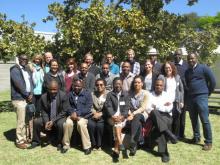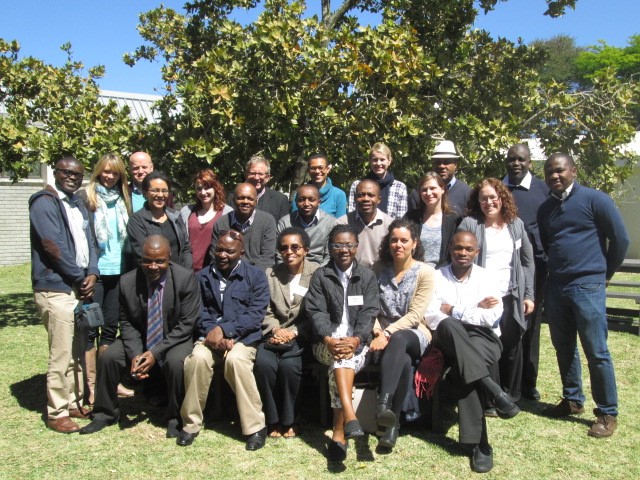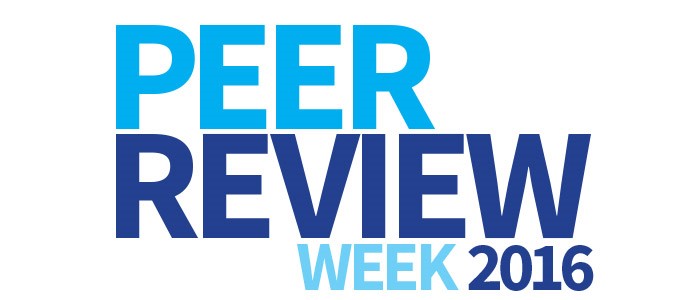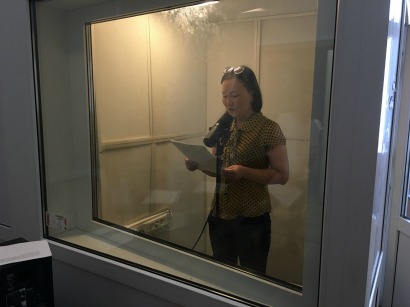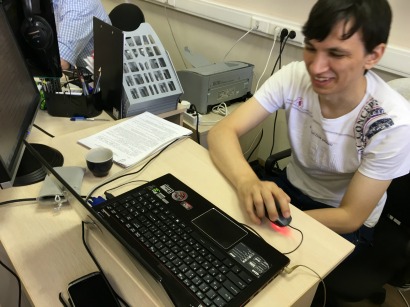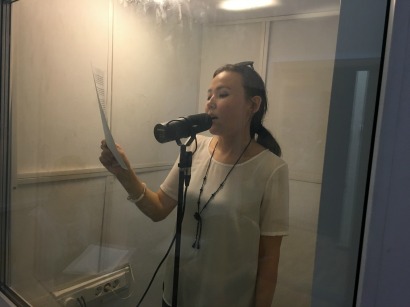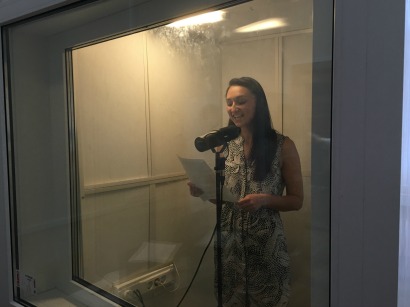Targeted Updates project: Case Study B


The Targeted Updates project aims to provide policy-makers, in particular guideline developers, with up-to-date information from Cochrane Reviews, tailored to their needs and working to a fast timeline. Targeted Updates use Cochrane Reviews as their foundation, but focus on updating selected comparisons and outcomes, working in close consultation with key stakeholders. In this post, the team describes their next case study. For more information, please see the Targeted Updates project page.
Case Study B: Questions commissioned by a Guideline Developer
1. Context
The Norwegian Directorate of Health (NDH) were introduced to Targeted Updates during a workshop at 2015 Guideline International Network (GIN) meeting. The NDH contacted the Targeted Update team asking for four Targeted Updates to be produced in order to inform guidelines that they were in the process of developing. Following the initial expression of interest, the Targeted Update team liaised with Clare Glenton, the Director of Cochrane Norway, who thought that producing the Targeted Updates would reinforce their relationship with the NDH in Norway.
2. Process
For each of the four identified reviews, we began the process by liaising with the original Cochrane Review Group (CRG), the Cochrane Review author team, and by conducting an initial assessment of the latest version of the full Cochrane Review.
Stroke CRG
The first of the four research questions identified as a priority related to a review from the Stroke CRG. This review update was recently completed and ready for publication. However, following discussion, the commissioner chose to proceed with the production of a Targeted Update, as the question they were asking was slightly different question to the ones addressed by the full review. The Targeted Update team completed all tasks for the Targeted Update and the editorial base served as content experts. The first draft of the Targeted Update was produced within 6 weeks. The peer review process for these documents was completed a further 8 weeks later. The input from the author team proved to be enormously valuable for finalizing the Targeted Update document.
Fertility Regulation CRG
The second of the four research questions identified as a priority related to a review from the Fertility Regulation CRG. This Cochrane Review had just been updated and published; consequently no searching, screening or data extraction work was required. After consulting the NDH, a decision was taken to make changes to the analyses by including some additional data that had been provided in a table, and by combining cluster RCTs with regular RCTs. The Targeted Update team completed the Targeted Update with the help of a statistician for the analyses and advice from the first author of the review. The first draft of the Targeted Update was produced within six weeks. The peer review process for these documents was completed a further seven weeks later.
Common Mental Disorders CRG
The third of the four research questions identified as a priority related to a review from the Common Mental Disorders CRG. As the question of interest to the NDH differed substantially from the original Cochrane review, and the review had not been updated since 2007, it was necessary to seek the involvement of the CRG editorial base, and particularly the Trial Search Coordinator (TSC). The TSC proved especially valuable due to the complexity of the topic and the number of references identified for initial screening. The Targeted Update team completed all tasks for the Targeted Update with search, screening, data extraction and content expertise help from the CRG. The relevant Cochrane Review was split into two Targeted Updates. The first draft of the Targeted Update documents was produced within nine weeks. The first peer review of these documents was completed a further four weeks later.
Schizophrenia CRG
The fourth research questions identified as a priority related to a review from the Schizophrenia Cochrane Review Group (CRG). The Targeted Update team and freelancers completed all tasks for the Targeted Update with content expertise from the original author team. Work on this Targeted’ Update began in April 2016. The first draft of the Targeted Update was produced within 8 weeks. The first peer review of these documents was completed within one day.
Links available here
- Intensive speech and language therapy for aphasia following stroke
- Interventions for preventing unintended pregnancies among adolescents
- Cognitive behavioural therapy compared to any other psychological therapy for binge eating disorder
- Cognitive behavioural therapy compared to psychodynamic psychological therapy for binge eating disorder
- Maintenance treatment with antipsychotic drugs for schizophrenia
3. Feedback from the CRGs involved
Two of the four participating CRGs were able to provide feedback on the process.
The process for completing TUs
The CMD Group had positive views on the process and, though the timeframe was a challenge, reported that “overall the teams on both targeted updates worked really well and efficiently together”. The Stroke Group provided extensive and valuable feedback on TU commissioning and would have been very much willing to work directly with guideline developers.
Challenges encountered/suggested improvements
The CMD Group felt their main challenge was “getting sufficient information regarding the inclusion criteria in a timely manner”. Other challenges centred on mechanisms for selecting reviews suitable for TUs. This is a routine step in the TU process, but is not always straightforward. For example, the commissioner of the Targeted Update undertaken with the Stroke Group used a different definition of ‘Intensive’ Speech and Language Therapy from that used in the review (i.e., ≥ 5 times/week) and, as a result, the full review update would not have addressed their specific question. The Stroke review authors noted the need for more detailed consideration of this process to ensure that a Targeted Update is genuinely required, suggesting, “prior to agreeing the scope for a TU, there should be a thorough examination of whether relevant Cochrane reviews (and review updates) are already underway”.
Implications for the management of the full Cochrane Review
The CMD Group indicated that although “the authors were not planning to update this review at this time”, the overall process did highlight the potential priority of this topic for CMD, and the necessity for considering a full review update. The authors of the Stroke review noted the “clear discrepancies between the findings of the TU and the associated Cochrane systematic review”, attributable to the different definition of ‘Intensive’ Speech and Language Therapy of interest to the NDH. The differences in conclusions were subsequently highlighted in the TU ‘What’s New’ section, and further clarified in the ‘Implications and Conclusions’ section. The Stroke Group authors also expressed concern that “the two documents are at a high risk of being perceived as arising from the same review team”. As part of the pilot, the TU documents were modified to include a statement as part of the cover page clearly outlining the authorship and ownership of the TU and the original review.
Use of financial incentives
The Stroke authors were concerned that “an externally funded Cochrane activity will appear in the public domain before the unfunded full update”. Although the authors were assured that their TU would not be made publicly available before their full review update, this did highlight potential problems around perceived competition between the two outputs. The funding for the CMD Group was used for freelance screening and data extraction, and the group found this level of funding helpful to expedite the work.
The presentation and format of the TU document
The CMD Group found the product “succinct, well presented, and clear answers to the targeted questions” and they were “really impressed with the output”. However, they felt that a separate section on quality assessment might be useful, as well as clearer presentation of the outcomes, as currently “you have to dig for them in the results and in the purple text on the 2nd page”. The Stroke Group authors felt that the “methodologies underpinning the TU and how these differ (if at all) from the Cochrane review” was unclear. This feedback resulted in increased clarity to the ‘Supplementary Materials’ document for all subsequent TUs, so that all differences in methods were highlighted.
4. Feedback from commissioners
The feedback from the NDH about their experience of commissioning TUs was predominantly positive.
The process of commissioning and delivering TUs
These TUs were “commissioned in order to reduce the work-load on the review team”. They were “very pleased with the customer engagement and responsiveness”, although they suggested that an ‘options menu’ might be valuable for commissioners. The NDH found the experience of working with the TU team “inspiring” and reported that they had “enjoyed being part of Cochrane’s TU project”.
Challenges encountered and suggested improvements
The NDH acknowledged that there was a delay in finalizing some of the commissions, due to the difficulty the TU team experienced in identifying relevant and available peer reviewers. They suggested that “a possible solution may be to involve us in the search for peer reviewers at an earlier stage in the process”. They also acknowledged that peer review is one of the less important features for them, as “we put all our national guidelines out for an open national hearing”. Finally, they thought that “in the future, you may consider to have a pick and choose menu with possible content elements, including any time delay of delivery if choosing extra content elements”.
Presentation and the value of different TU features
For the NDH, the most important features of a TU were the focused question, rapid production, and short, structured and concise layout, based on a Cochrane review. They were also pleased with most aspects of the final document, including “the design, layout and content elements”. For all TUs, the NDH transfers the information into a local template to share electronically through an API (Application Programming Interface) and the current TU presentation allows for this. They “would, however, also appreciate the possibility to link to the publication on the Cochrane website.”
Funding of TUs
The NDH confirmed that they would be likely to commission more Cochrane TUs in the future, even if the price was to increase to as much as £10,000 per TU, although “It would probably affect the total number of commissions, but we would still use and appreciate the opportunity to commission TUs when needed”.
5. Feedback from you
We are very interested to know what you think about these TU documents, and the project in general. We would really appreciate it if you could take just 5 minutes to read through and answer this short list of questions. Thank you very much for your participation!
6. Who are the team
Intensive speech and language therapy for aphasia following stroke
- Targeted Update team involved in production
- Hanna Bergman
- Nuala Livingstone
- Review authors
- Marian Brady
- CRG team
- Hazel Fraser
- Peter Langhorne
Interventions for preventing unintended pregnancies among adolescents
- Targeted Update team involved in production
- Hanna Bergman
- Adriani Nikolakopoulou
- Molly Grimes
- Nuala Livingstone
- Review authors
- Chioma Oringanje
- CRG team
- Anja Helmerhorst
- Frans M. Helmerhorst
Cognitive behavioural therapy compared to any other psychological therapy for binge eating disorder
Cognitive behavioural therapy compared to psychodynamic psychological therapy for binge eating disorder
- Targeted Update team involved in production
- Hanna Bergman
- Molly Grimes
- Nuala Livingstone
- Review authors
- Philippa Hay
- CRG team
- Rachel Churchill
- Sarah Dawson
- Sarah Davies
Maintenance treatment with antipsychotic drugs for schizophrenia
- Targeted Update team involved in production
- Hanna Bergman
- Artemisia Kakourou
- Sarah Davies
- Sarah Dawson
- Loukia Spineli
- Review authors
- Stefan Leucht
- CRG team
- Clive Adams
- Claire Irving


